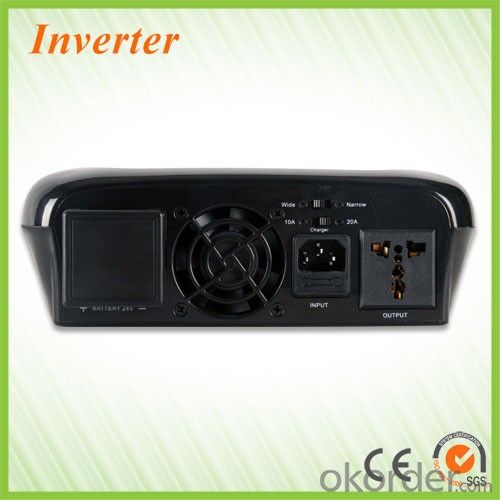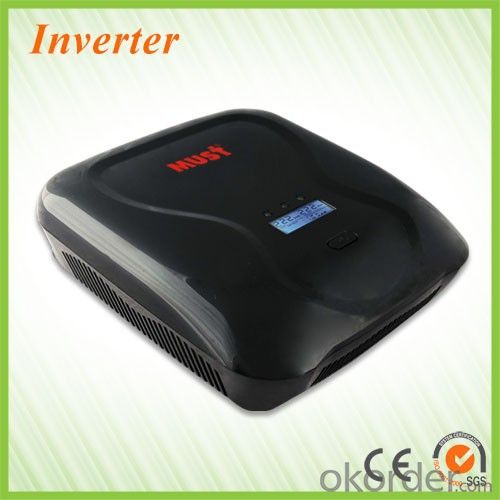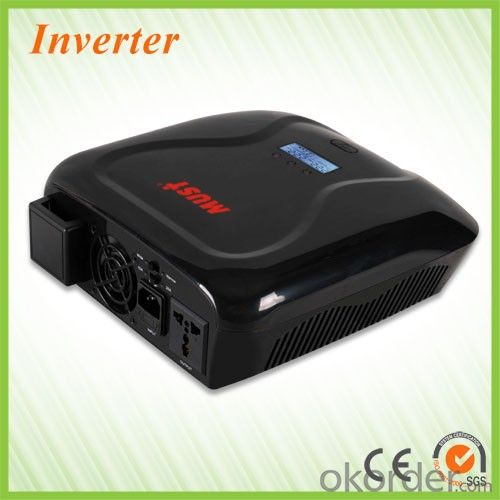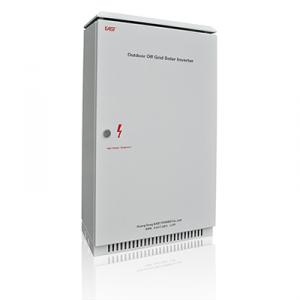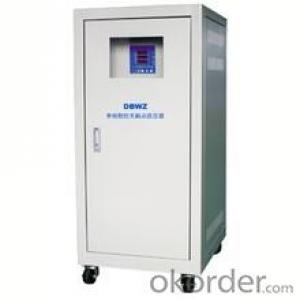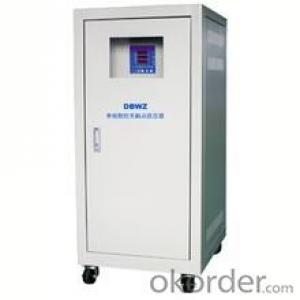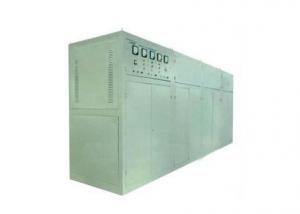Three-Phase Stabilized Power Supply With Fully-automatic Compensation
- Loading Port:
- China main port
- Payment Terms:
- TT or LC
- Min Order Qty:
- 1 pc
- Supply Capability:
- 1000 pc/month
OKorder Service Pledge
OKorder Financial Service
You Might Also Like
SBW 20-320KVA
SBW Three-Phase Stabilized Power Supply with fully-automatic compensation is suitable for the electric network with unbalanced three-phase voltage inputs. It can balance three-phase outputs automatically and maintain the output in good condition during the fluctuation of electric network and load.
Model | SBW (Independent regulator voltage) | SBW(Dependent regulator voltage) | |||||||
VA Rating | 20KVA | 30KVA | 50KVA | 100KVA | 50KVA | 100KVA | 180KVA | 225KVA | 320KVA |
Input | |||||||||
Phase | Three Phase+N+GND | ||||||||
Voltage Range | Phase voltage 220V±20%、Line voltage 380V±20% | ||||||||
Output | |||||||||
Voltage Range | 220V AC (Phase Voltage)、380V AC (Line voltage) | ||||||||
Voltage Precision | ≤±3% | 2%~5% (adjustable) | |||||||
Frequency | 50/60Hz | ||||||||
Efficiency | ≥95% | ||||||||
Others | |||||||||
Protection | Overvoltage, overcurrent, loss of phase, phase-sequence and mechanical failure protection | ||||||||
Noise(dB) | ≤50 | ||||||||
Display Mode | LED Indicator Light; Pointer voltmeter | ||||||||
Input/Output Connection | Terminal Block | ||||||||
Waveform Distortion | No additional waveform distortion | ||||||||
Response Time | ≤1.5s(External voltage change 10%) | ||||||||
Insulation Resistance | ≥2MΩ | ||||||||
Dielectric Strength | Low frequency sine voltage 1500 for 1 minute (without the phenomena of breakdown and flashover) | ||||||||
Overload Capacity | 120% of rating current >10s | ||||||||
Ambient Temperature | -10℃~+40℃ | ||||||||
Relative Humidity | 20%~85% | ||||||||
Working | Continuing Working | ||||||||
Dimension(W×D×H)mm | 730x485x1110 | 810x570x1410 | 990x620x1530 | 800x600x1520 | 900x700x1660 | 1100x835x1830 | 1100x850x1830 | 1240x900x2109 | |
Net Weight (kg) | 160 | 185 | 245 | 410 | 280 | 415 | 645 | 765 | 945 |
Packing Dimension(W×D×H)mm | 780x555x1160 | 860x640x1460 | 1040x690x1580 | 850x670x1570 | 950x770x1710 | 1150x905x1880 | 1150x920x1880 | 1290x970x2159 | |
Gross Weight (kg) | 175 | 200 | 266 | 435 | 310 | 439 | 673 | 810 | 995 |
· Q. What is an UPS and What it is for ?
An uninterruptible power supply (UPS) is a device that allows your computer or telephone switch or critical equipement to keep running for at least a short time or longer time when the primary power source is lost. It also provides protection from power surges, spikes, brownouts, interference and other unwanted problems on the supported equipment.
· Q. How long the UPS to run when power goes?
This can take 3 paths.
1.You can pick a UPS that is rated for pretty much the full VA you need so it will be running at 100% of capability and will thus last 'n' minutes.
2.You can pick a UPS that is rated at a much higher VA value than you really need so, for example, is running at 50% of capability and will thus last for longer than the UPS from option 1.
3.You can use extra external battery packs to run for longer. If charging capability allows, the more and the bigger batteries you take with, the longer time UPS runs.
or using a generator after about 6 hours, it will be more cost-effective, with a short runtime UPS to bridge the generator start-up gap.
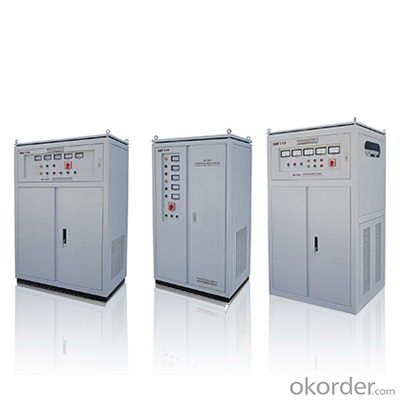
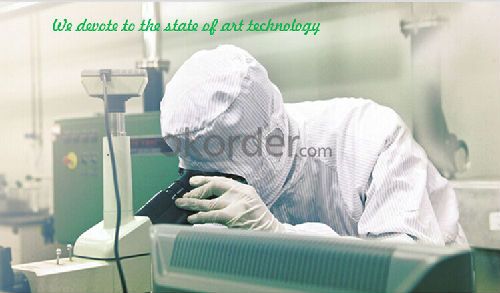

- Q: How does a solar inverter handle power surges or fluctuations?
- A solar inverter handles power surges or fluctuations by using advanced circuitry and protective measures. It typically includes surge protection devices that can absorb excessive voltage spikes, diverting them away from the system. Additionally, the inverter continuously monitors the grid voltage and adjusts its own output accordingly to maintain a stable and safe supply of electricity.
- Q: What are the different types of solar inverters?
- There are three main types of solar inverters: string inverters, microinverters, and power optimizers. String inverters are the most common and cost-effective option, where multiple solar panels are connected in a series and the inverter converts the DC power from the panels into AC power for use in the home. Microinverters are installed on each individual solar panel, converting DC power to AC power directly at the panel level. Power optimizers are installed with string inverters and optimize the output of each solar panel individually, ensuring maximum energy production.
- Q: Can a solar inverter be used with a solar-powered agriculture system?
- Yes, a solar inverter can be used with a solar-powered agriculture system. A solar inverter is essential for converting the direct current (DC) electricity produced by solar panels into alternating current (AC) electricity required to power electrical devices and equipment used in the agriculture system. This allows for the efficient utilization of solar energy for various agricultural applications such as irrigation systems, pumps, lighting, and other electrical equipment.
- Q: What is the role of a solar inverter in voltage support?
- The role of a solar inverter in voltage support is to convert the direct current (DC) generated by solar panels into alternating current (AC) that is compatible with the electrical grid. Additionally, it helps regulate the voltage levels to ensure a steady and consistent supply of electricity to the grid, thereby supporting voltage stability.
- Q: What is the role of a power quality analyzer in a solar inverter?
- A power quality analyzer in a solar inverter is responsible for monitoring and analyzing various electrical parameters such as voltage, current, frequency, harmonics, and power factor. It ensures that the solar inverter is operating efficiently and delivering high-quality power to the grid. By detecting and diagnosing any power quality issues, the analyzer helps in identifying potential problems, optimizing energy production, and maintaining the overall performance and reliability of the solar inverter system.
- Q: Can a solar inverter provide power during a blackout?
- No, a solar inverter cannot provide power during a blackout.
- Q: What is the maximum input voltage for a solar inverter?
- The maximum input voltage for a solar inverter typically depends on the specific model and manufacturer. However, in general, solar inverters can handle input voltages ranging from 200 to 1000 volts, with some high-capacity inverters even accommodating higher voltages. It is essential to consult the manufacturer's specifications or user manual to determine the exact maximum input voltage for a specific solar inverter.
- Q: How does a solar inverter handle shading or partial obstruction of solar panels?
- A solar inverter typically addresses shading or partial obstruction of solar panels by employing a technology called maximum power point tracking (MPPT). This technology allows the solar inverter to constantly monitor the output of each individual solar panel and optimize the power generation by adjusting the voltage and current levels. By doing so, it minimizes the impact of shading or obstruction on the overall system performance, ensuring maximum energy production even in less than ideal conditions.
- Q: Can a solar inverter be used with smart home systems?
- Yes, a solar inverter can be used with smart home systems. Many modern solar inverters are designed to integrate with smart home technology, allowing homeowners to monitor and control their solar energy production and consumption through their smart devices. This integration enables better management of energy usage, optimization of solar power generation, and the ability to remotely monitor and adjust the inverter settings for improved efficiency and convenience.
- Q: What are the key considerations for selecting a reliable solar inverter manufacturer?
- When selecting a reliable solar inverter manufacturer, there are several key considerations to keep in mind. First and foremost, it is important to evaluate the manufacturer's reputation and experience in the industry. Look for manufacturers with a proven track record of producing high-quality, reliable inverters. Another crucial factor is the warranty offered by the manufacturer. A reliable manufacturer will provide a comprehensive warranty that covers both the product and its performance over a reasonable period of time. This ensures that any potential issues with the inverter can be addressed and resolved without incurring additional costs. The technical specifications and features of the inverters should also be carefully assessed. Consider factors such as efficiency, reliability, and compatibility with your specific solar panel system. Look for inverters that are capable of effectively converting solar energy into usable electricity while maintaining stable performance in various weather conditions. Furthermore, it is advisable to consider the after-sales support and customer service provided by the manufacturer. A reliable manufacturer will have a responsive and knowledgeable customer support team that can assist with any queries or technical issues that may arise after the installation of the inverter. Lastly, it is beneficial to research and compare reviews and feedback from other customers who have used the manufacturer's inverters. This can provide valuable insights into the overall satisfaction and reliability of the products. By carefully considering these key factors, you can select a reliable solar inverter manufacturer that meets your specific requirements and ensures long-term performance and satisfaction.
Send your message to us
Three-Phase Stabilized Power Supply With Fully-automatic Compensation
- Loading Port:
- China main port
- Payment Terms:
- TT or LC
- Min Order Qty:
- 1 pc
- Supply Capability:
- 1000 pc/month
OKorder Service Pledge
OKorder Financial Service
Similar products
Hot products
Hot Searches
Related keywords





